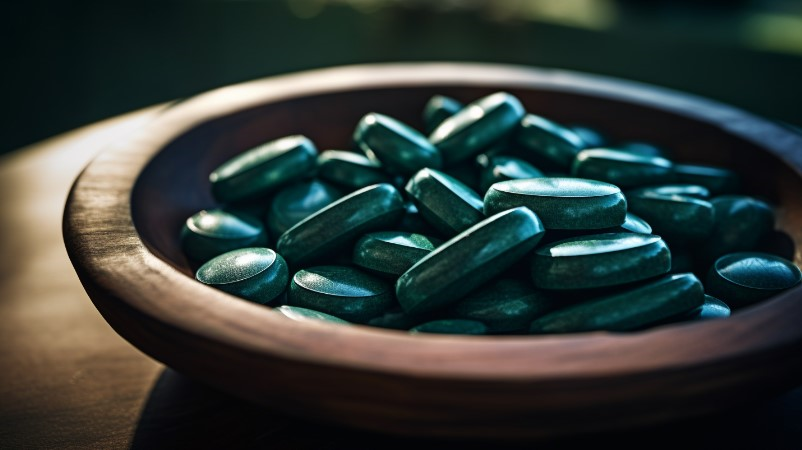Spirulina is rich in nutrients and is known as green blood

The first people to use spirulina as food were the Aztecs in Mexico in the 16th century. They picked spirulina from Lake Texcoco and made pancakes for sale. The Aztecs called it tetritur, which means stone excrement. Spirulina was discovered by a French scientist in the 1960s, but he never consumed it as food. The first large-scale spirulina production machine was built in Mexico in the 1970s. The history of spirulina consumption in Chad can be traced back to the Kanem-Bornu Empire in the ninth century. At that time, people collected spirulina from Lake Chad.
Spirulina History of discovery
In the early 1960s, when the French explorer Dr. Clement was exploring Africa, he discovered that the Janim people on the shores of Lake Chad were still strong, energetic, and healthy and long-lived despite the lack of animal protein and even insufficient food and vegetables. . After investigation, it was found that they often fished for spirulina floating in Lake Chad, dried it for consumption and treated diseases.
Spirulina nutrient content
The nutritional content of Spirulina is characterized by high protein content, low fat and fiber content, and it also contains a wide variety of vitamins. It is the food with the highest ビタミンB12 そして beta-carotene content. In addition, it is the most absorbable food among all foods. It has the highest iron content, and is also found to contain algae protein with anti-tumor effects, as well as a large number of other mineral elements and biologically active substances that improve the body’s immunity.
Spirulina polysaccharide is the main form of carbohydrate in the body of Spirulina, and its content is as high as 14% to 16% of dry weight. Almost all the lipids contained in spirulina are important unsaturated fatty acids, and the cholesterol content is very small. The protein content of spirulina is as high as 60% to 72%, which is equivalent to 1.7 times that of soybeans, 6 times that of wheat, 9.3 times that of corn, 3.1 times that of chicken, 3.5 times that of beef, 3.7 times that of fish, 7 times that of pork, and 7 times that of eggs. 4.6 times that of whole milk powder and 2.9 times that of whole milk powder.
Spirulina is rich in vitamins B1, B2, B3, B6, B12 and vitamin E. It can be said that it concentrates all kinds of vitamins that the human body needs most at a full price.
Spirulina powder is also a natural treasure house of chlorophyll, with large quantity and high quality, accounting for 1.1% of the algae body, which is 2 to 3 times that of most land plants and 10 times that of ordinary vegetables. The main type of chlorophyll contained in Spirulina is クロロフィル a. Its molecular structure is very similar to human heme. It is the direct raw material for human synthesis of hemoglobin. It can be called “green blood”, and its content is as high as 7600mg/kg algae powder.
Spirulina contains all essential amino acids for the human body, and the lysine content is as high as 4% to 4.8%. Compared with animal and plant source foods, it is closest to the recommended standards of the Food and Agriculture Organization of the United Nations, and its composition is balanced and its absorption and utilization rate by the human body is particularly high.
Spirulina is rich in minerals needed by the human body. Calcium, phosphorus, magnesium, iron, sodium, manganese, zinc, potassium, chlorine, etc. account for about 9% of the total mineral content in the algae. The iron content is 20 times that of ordinary iron-containing foods; the calcium content is 10 times that of milk. The minerals contained in spirulina are all alkali metal elements within the biological range of cells and do not produce any side effects on human cells, tissues and organs.
() ()